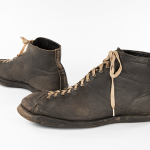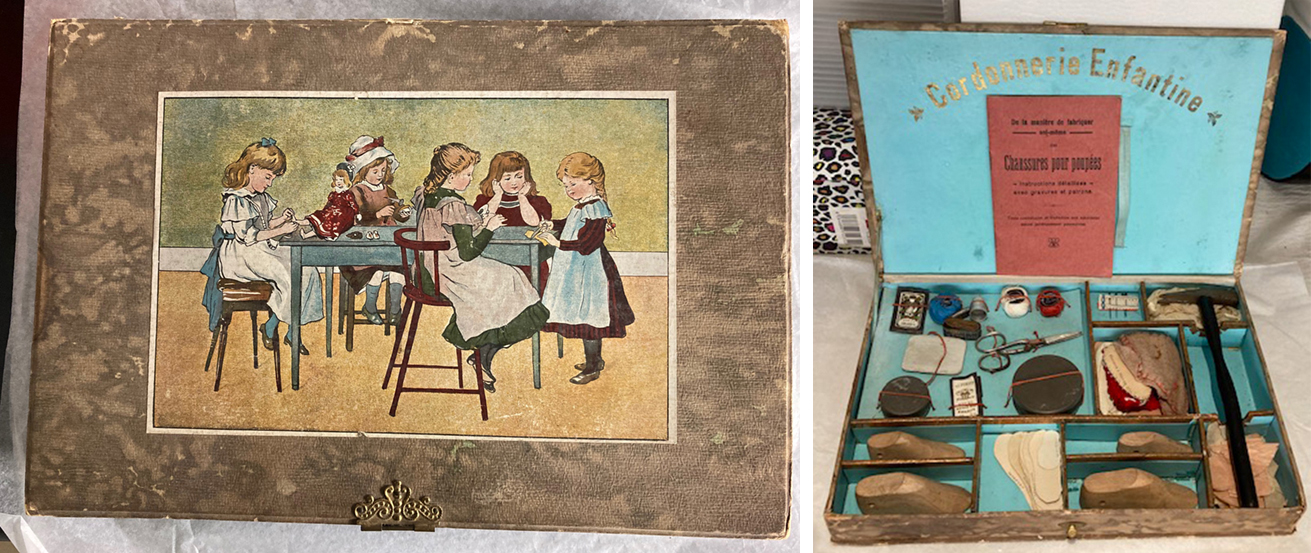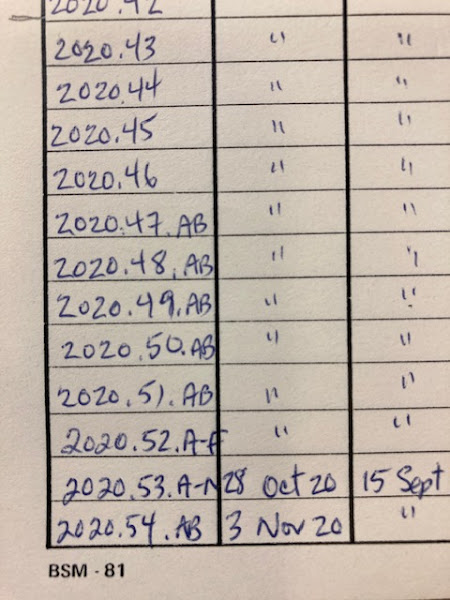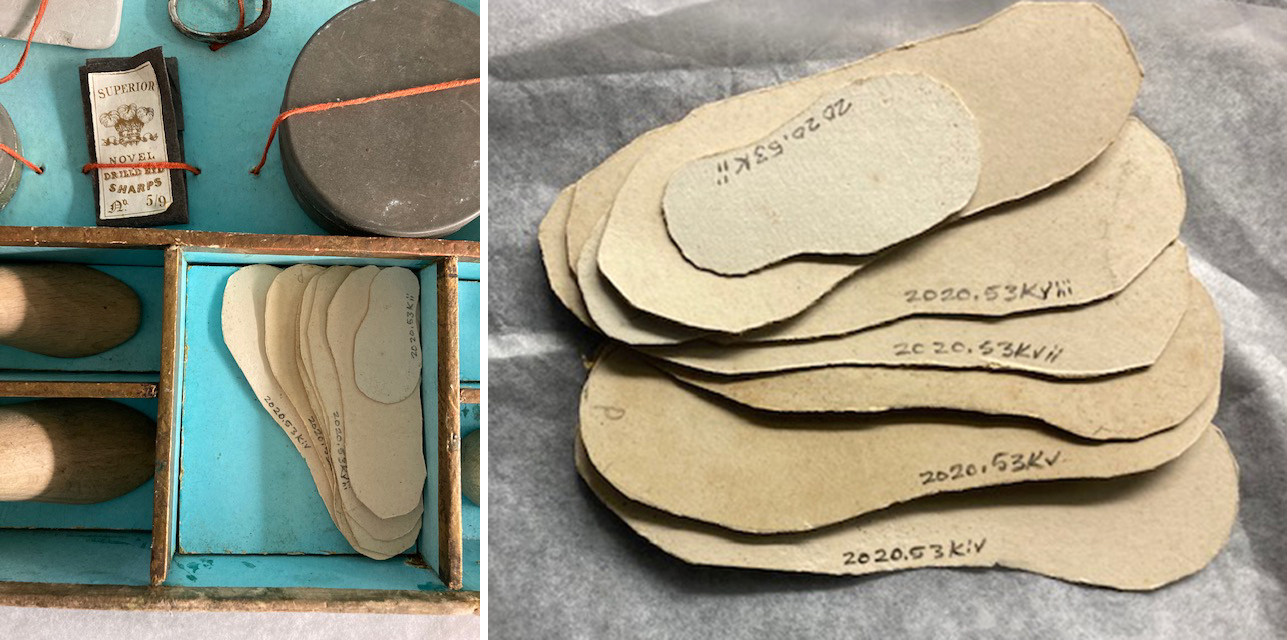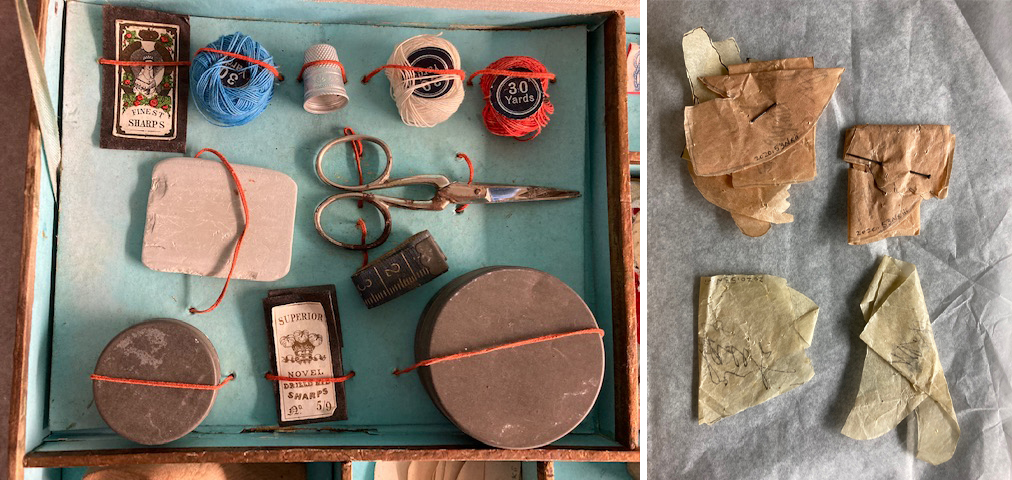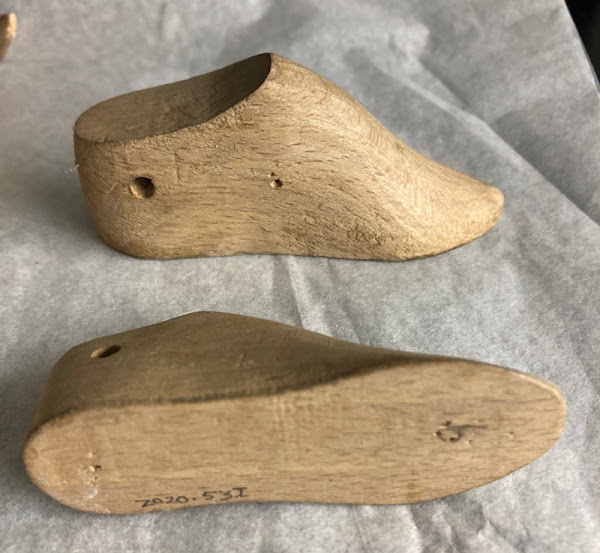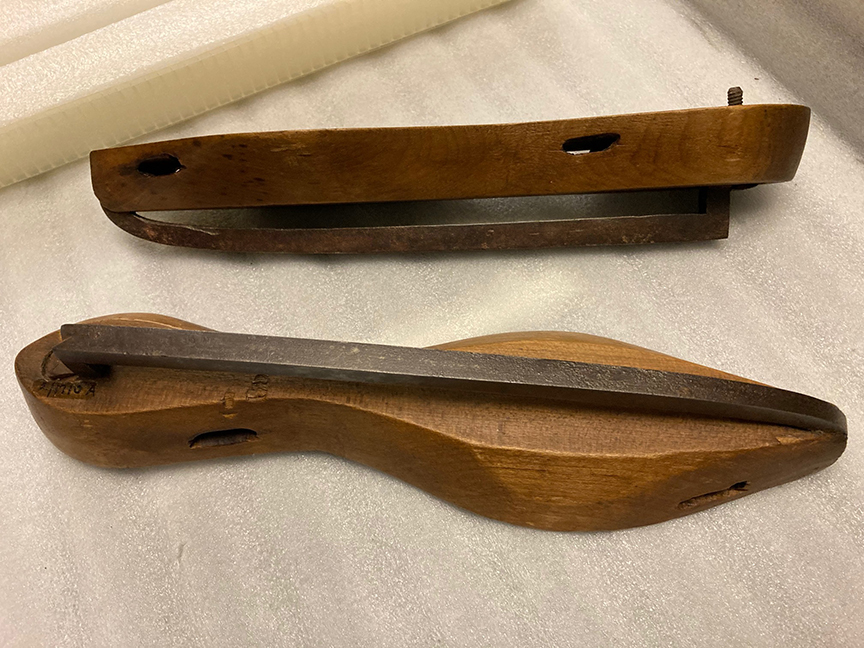To continue on the Upon Arrival blog series on Collections Management, I’ll write today about how new items coming into the collection at the Bata Shoe Museum are accessioned. This is the next step in processing new acquisitions.
As soon as an object is accepted into the Museum’s Collection, and the ownership has been transferred to the museum, the item is accessioned by assigning it a control number, referred to as its accession number. Using a numbering system as simple as 1, 2, 3, 4 etcetera is not an effective method because it gives very little information in itself and the number will become unwieldy when it gets into the tens of thousands.
Every museum determines their own system for setting up a compound number. At the Bata Shoe Museum, our system is alpha-numeric and includes a set of two numbers followed by letters if there is more than one part to the item, and then Roman numerals if the parts get even smaller. The first part of the number is simply the year of acquisition, so for example, all of the acquisitions this year start with “2020”. The year is followed by a period and then the next number. The next number is a simple number sequence that begins with “1” for the first acquisition of the year and increases from there, allowing us to see how many new objects came into the collection that year. This number is followed by a period, and then finally the various components of the item are identified with a letter, beginning with ‘A’. Here is an example: 2020.0236.A-D
Let’s say this is the accession number for a pair of shoes in a two-piece shoe box. The number indicates that the object was accessioned in 2020; it was the 236th item to be added to the collection that year, and there were four components in total. The components were most likely the pair of shoes: A is given to the right shoe; B is given to the left; C would be the shoebox lid; D would be the box bottom. Sometimes we accession items that have more components than there are letters in the alphabet, so in that case, we repeat the alphabet adding an “A” in front. So, the letter sequence runs like this:
A, B, C, ……X, Y, Z, AA, AB, AC, AD, and so on.
The number can get more complicated if there are separate pieces making up each component. A few weeks ago when accessioning a doll’s shoemaking kit, I had to number 14 components, so I used component letters A through N. The complication was that each component has components! To deal with this, our system allows for Roman numerals as the next number set. The doll’s shoemaking kit has a paper pattern component N with 11 pieces to it, so these became Ni-xvii.
The accessioning aspect of processing new acquisitions is important as it serves as the basic controlling number for each object. Each item’s unique and permanent accession number will be the main point of reference that joins the item to all of the information that is known about it, including how it came to the museum, how and where it has been exhibited at the museum, the research that has been done on it, books that relate to it, photographs of it and conservation analyses and treatment records.
Suzanne Petersen, Collections Manager


